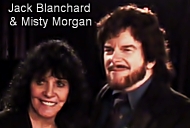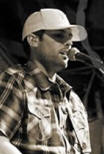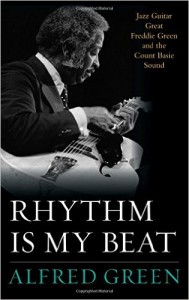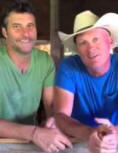News
 This weeks #1 on the IndieWorld Country Record Report
This weeks #1 on the IndieWorld Country Record Report
Richard Lynch – “It’s All In My Head“
– MOD Records
www.IndieWorldCountry.com
About Fred’s Country program:
Le program Fred’s Country: La musique Country de Tradition avec Frederic (Fred) Moreau. Le program Fred’s Country est diffusé sur 65 fréquences FM, 53 radios ou webradios.
The Fred’s Country program, is hosted by Frederic (Fred) Moreau and broadcasted weekly on 47 frequencies, 53 Affiliated FM and Web Radio Stations in France, Canada, Belgium, Spain, and more. Listen, download The Fred’s Country program here…
Autre particularité du program Fred’s Country, c’est la seule émission en Europe à programmer un minimum de 75% d’artistes Canadiens … particularity of the Fred’s Country program, each week, a minimum of 75% of Canadian Country artists on the air
Radio Show Host: Fred Moreau
Program Fred’s Country w43-2015 – October 23rd, 2015
Music Charts Magazine® is proud to be friends with Mr. Moreau and glad to now be one of the many to host Program Fred’s Country. ( French/English)
THE SUNSET TRAIN.
He headed for the cashier’s counter,
hoping that the curtain rods he was carrying
were the ones she wanted,
when he saw it for the first time.
Funny!
He’d been in this store and up and down these aisles dozens of times,
but he had never noticed those wall pictures before.
He wasn’t much of an art critic,
but he did know he’d never seen anything quite like that train picture.
The surface of the picture was textured
to look like a genuine oil painting,
and somehow that scene looked more real than life!
The silver steam from the old engine glowing in the sunset,
billowing against the yellow-blue-orange-pink sky.
The brightly colored, but weather worn railroad cars.
The red caboose so real you could almost step right into it.
Each piece of gravel along the track,
each clump of vegetation on the lonesome prairie
clearly defined and casting a long, late afternoon shadow.
The mountains were a bluish haze against the distant horizon.
It was a painting you could stare at for a long time,
finding details previously overlooked.
A bell rang. The store was closing.
On impulse he hurried to the Customer Service Desk
and put the picture on “layaway” with five dollars,
that should really have gone toward overdue bills.
He didn’t know when he’d be able to manage
the eleven-ninety-five balance.
He paid for the curtain rods and went home,
feeling a little guilty.
She stood back and looked critically at the curtains she’d hung.
He told her that they sure made a big difference in the little apartment.
She laughed that, at least the curtains looked better
than the view of the trash cans in the alley.
He held her
and said he wished he could provide her with a decent home,
with enough furnishings to go around,
and she replied that they weren’t doing too badly for newlyweds,
and that she believed in him.
He didn’t mention the money
he’d foolishly spent on a picture of a train.
Pay day again, and another losing battle with arithmetic.
If only a tree or a patch of grass could be seen from their window,
it might raise their spirits by interrupting the stark drabness
surrounding their dingy, low rent apartment.
He felt especially sorry for her, being stuck there all day.
At least taking the bus to the factory everyday gave him a change of scene.
These were his thoughts as he paid the cashier
and waited for the large picture to be wrapped.
He centered it carefully on the wall
over the big easy chair with the broken spring,
and called her to come in from the kitchenette
and take a look at the “surprise”.
Wiping her hands on her apron, she glanced around the room
until her eyes stopped at the unexpected explosion of color.
It was so beautiful she almost cried!
It was like having a window overlooking a lovely, peaceful valley
locked in eternal sunset.
They held hands and stared at the painting until dinner almost burned.
Years struggled by, and the broken spring chair was replaced
by a new living room suite, complete with payment book.
They moved several times in the course of their lives,
first to a couple of larger apartments,
then to a house in a suburban development and finally,
anticlimactically, back to another cheap apartment,
where they were to spend their autumn years.
The infirmities of old age often require a tightening of purse strings.
They weren’t complaining though.
They’d been through rough times before.
Through the years they’d managed to hang on to two treasures:
the Sunset Train painting and a true love for each other.
Maybe they weren’t so poor after all.
It hit him hard when she passed away.
Somehow, he’s always imagined he’d be the first to go.
He wasn’t prepared for the horrible emptiness.
Nobody ever is.
He took the habit of conversing with her, even though she was gone.
He’d stare at the painting and talk over old times.
Sometimes he’d sit for hours in front of the television,
but his eyes would wander back to the Sunset Train,
their most prized possession.
He’d imagine that they were together in that valley,
or riding on the train itself.
The neighbors, aware of his condition since her death,
occasionally dropped in to check on him.
Conversations always gravitated to the unusual picture.
Several days had passed
before anyone noticed the junk mail and newspapers
accumulated outside his front door.
Fearing the old man had died,
and after receiving no answer to their knocking and calling,
the neighbors set their shoulders to the door
and the old wood gave way.
Finding no one in the apartment, all clothes intact in the closets,
and the television left on,
the neighbors notified the police of the old man’s disappearance.
They arrived shortly after.
While the premises were being inspected,
an officer casually commented to a neighbor,
“Unusual painting in there! So realistic, I mean.”
“Yeah,” replied the other,
“everybody remarks about that train picture. It’s real pretty.”
“No,” said the policeman,
“I’m talking about that big picture of the valley and the sunset.
There’s a railroad track runnin’ through it, I guess, but no train.
I’m pretty sure there was no train in that picture.”
And he was right. The train was gone.
Jack Blanchard

Jack Blanchard & Misty Morgan…
Grammy & CMA Award Finalists.
Billboard Duet of the Year.
Home Page: www.jackandmisty.net
Mastering & restoration studio: ( 352 ) 530 – 2068
Music Charts Magazine® History
– Song for the month of October 2015:
Starship
“We Built This City”
“We Built This City” is a song written by Bernie Taupin, Martin Page, Dennis Lambert, and Peter Wolf, and originally recorded by US rock group Starship and released as their debut single 1 August 1985.
The single version reached number one on the US Billboard Hot 100 on 16 November 1985, and also number one on the US Top Rock Tracks chart and number twelve in the UK.
The lyrics describe a city built on rock n’ roll music. The lyrics explicitly mention the Golden Gate Bridge and refer to “the City by the Bay”, a common moniker for Starship’s hometown of San Francisco, California. However, the lyrics also refer to “the City That Rocks”, a reference to Cleveland, Ohio, and “the City That Never Sleeps”, a reference to New York City. Capitalizing on the ambiguity, several radio stations added descriptions of their own local areas when they broadcast the song, or even simply added their own ident in its place.
Visit Starship by clicking the below links:
http://www.jeffersonstarshipsf.com/
 |
 |
|
 |
 |
| #1 | #2 | #3 | #4 | #5 |
|
Randy Rogers & Wade Bowen |
Bart Crow |
Curtis Grimes |
Casey Donahew Band |
Mike Ryan |
New! Profiles of Texas Radio Reporters here
Copyright © 2015, the Texas Music Chart. Used with permission from Best In Texas Music Marketing LLC, Houston, TX
 Date = 7 October 2015
Date = 7 October 2015
Author’s name = Alfred Green
Genre = Jazz
Title = Rhythm Is My Beat: Jazz Guitar Great Freddie Green and the Count Basie Sound
Publisher = Rowman & Littlefield
Review =
Published in the series Studies in Jazz overseen by the Institute of Jazz Studies at Rutgers University, Rhythm Is My Beat documents the career of Freddie Green, seemingly universally acknowledged as the greatest rhythm guitarist ever, in any genre. His genre was jazz. Because the author is the musician’s son, readers might expect mawkishness, but the text is neither sentimental nor particularly emotional. It provides biographical details in a straightforward manner, never milking them for effect. Once Alfred Green begins discussing the guitarist’s career, however, details about his father’s private life decrease significantly.
In focusing on music, not biography, Alfred Green presents a good overview of his father’s career, almost all of which—half a century–was spent with the band of Count Basie (thus, the book’s subtitle). He begins strongly by using photographic evidence to prove that in early 1937 his father played at the Black Cat Club in New York City with a group led by saxophonist Lonnie Simmons, a friend from South Carolina. (Green was from Charleston.) Because Green left relative anonymity with Simmons for the big time with Basie, details about the Black Cat engagement are important; they are also sometimes misunderstood. In the autobiography John Hammond on Record (1977), impresario Hammond states that Green worked at the Black Cat with the group of Skeets Tolbert, not Simmons, a claim repeated by some jazz writers because Hammond was in a position to know: he discovered Green at the club, thought him a good fit for Basie’s rhythm section, and introduced him to Basie. In other words, he was instrumental to the careers of both Green and Basie. Yet in identifying the group with which Green played at the Black Cat, Hammond is demonstrably wrong, as Alfred Green proves. He sets the record straight.
Anyone familiar with Basie’s band from 1937 until the leader’s death in 1984 and beyond it to Green’s death in 1987 will necessarily know the contour of Green’s career because of Green’s long, almost unbroken tenure with the leader, beginning in 1937. “Almost,” because of occasional illness, but also because Basie bowed to economic and musical realities (accommodating the new music known as bebop) by reducing his band to a small group in 1950, one that initially excluded Green. About two months later, though, the guitarist joined it, apparently by insisting that Basie employ him. At the urging of Billy Eckstine and Basie’s manager Willard Alexander, Basie discontinued the small group and by 1951 reconstituted a big band, which included Green. This organization relied more heavily on written arrangements (by the likes of Neal Hefti and Ernie Wilkins) than had previous versions of the band, which often played head arrangements (those that are spontaneous, or played from memory). Yet whether Basie led a relatively unrestrained band or one controlled by formal arrangements—or fronted no more than ten musicians—Green was, with a few brief exceptions, a constant, providing a dependable 4/4 beat that, with the remainder of the rhythm section, made the band swing. Not only did he create the beat, but when a musician violated it or was less than decorous on stage, he expressed dissatisfaction by glaring at the offending party with a gaze known as “the ray.” In so doing, he served as an enforcer, as the person who insisted that the band’s musicianship and integrity be maintained.
Despite being known primarily for his association with Basie, Green had a musical career apart from him, as the author documents in a discography of thirty-four unnumbered pages. Green was attractive to other musicians for the same reason Basie valued him: his ability to provide a steady beat. As a result, he performed on hundreds of recordings as sideman, beginning with Teddy Wilson and Billie Holiday in 1937 and concluding with Diane Schuur three days before his death at age seventy-five. He played at numerous sessions led by Basie’s instrumentalists, such as Buck Clayton, Paul Quinichette, and Lester Young, but also at ones led by musicians who had not been regulars with Basie, including Mildred Bailey, Ruby Braff, Bob Brookmeyer, Ray Brown, Benny Carter, Al Cohn, Nat Cole, Roy Eldridge, Coleman Hawkins, Woody Herman, Illinois Jacquet, Gerry Mulligan, Buddy Rich, Tony Scott, Sonny Stitt, Sir Charles Thompson, and Sarah Vaughan. With some of these and other leaders he participated in recordings that have proved enduring, including “This Year’s Kisses,” with Wilson and Holiday (1937); “A Sailboat in the Moonlight,” with Holiday (1937); “Ad-Lib Blues,” credited to Benny Goodman, though the clarinetist does not play on it (1940); Charlie Parker’s album Night and Day (1952); Sing a Song of Basie, by Lambert, Hendricks, and Ross (1957); and Ray Charles’s Genius + Soul = Jazz (1960).
Most important for his playing, Green also composed tunes, two of which are popular in jazz circles: “Down for Double” and “Corner Pocket”; the latter has been recorded over a hundred times, sometimes as a vocal titled “Until I Met You.” Alfred Green relates an engaging anecdote about what inspired Manhattan Transfer to record this piece, its version of which won a Grammy (130-31). The book includes an apparent contradiction about the number of tunes Green wrote. The author states that his father composed “in excess of thirty tunes” (132), but Mark Allen, who compiled the list of Green’s compositions that appears in appendix K, records only twenty (239-41). One wonders why, if Green wrote at least thirty, Allen fails to account for the other ten or more. Alternatively, Allen could be accurate and the author is mistaken. Alfred Green should have resolved this issue.
Green’s narrative constitutes a little over half of this 325-page book. Fourteen appendices compose most of the other pages. The appendices consist mainly of essays—mostly (all?) by authors other than Green—about the guitarist’s technique and style that will likely interest musicians, not ordinary readers. Photographs enhance the book. Candid shots, which are especially appealing, show Green in a street scene looking dapper, seated at a club with Billie Holiday and Lester Young, pretending to fight the boxer Sugar Ray Robinson, golfing separately with Billy Eckstine and Joe Williams, and, in a beautiful picture, shaking hands with President Reagan at the White House. There are many others.
Though Green adequately chronicles the career of an important musician, his text has problems. When using the word “always,” for example, he does not allow for exceptions when exceptions clearly exist, as when stating that “John Hammond was always on the prowl” (47) and that Lester Young played “to a meter that was always a fraction-of-a-beat ahead of him” (58). Hammond never slept? Young never played on the beat, even in ensemble passages? Green offers opinions as facts, as when claiming that Jimmy Rushing was “the best blues singer around” (74) and that saxophonist Frank Wess was “incomparable” (77). Though the author documents many of his statements, he sometimes fails to do so when proof is needed, as when stating that “Lester Young struggled to keep his emotions intact” following the death of saxophonist Herschel Evans and that, as a result, saxophonist Jack Washington “often had to help the distraught [Young] to the stage and his seat” (59). Green is sometimes credulous. Does he really believe that bandsmen “peed from the moving bus with the door partially open” (78)? (Try imagining it.) Or that, despite the claims of Frank Wess and Benny Powell, an opened can of sardines fell from an overhead bus rack and landed on singer Joe Williams’s head, where it remained for the remainder of the trip (81)? On the topic of music, one wonders why Green characterizes Dizzy Gillespie, Fats Navarro, and Charlie Parker as hard-bop players (98) and why, other than listing it in what is termed a “selected discography,” he ignores The Atomic Basie (1957), arguably the most impressive post-war Basie big band album. Identifying Ruby Braff as a “neo-Dixieland trumpeter” disserves the musician (246). Most disconcerting, though, are constructions such as these that, first, use the wrong case and, second, feature a dangling modifier: a “tiff between he and Hammond” (68) and “In interviewing John Williams . . . , the twenty-five-year Basieite once asked me . . .” (91). Because Green was unaware of these problems, his editor should have corrected them.
In sum, Alfred Green adequately summarizes his father’s career without getting bogged down in details or becoming technical when discussing music. That is, general readers can enjoy the book, though they will be distracted by writing lapses such as those mentioned here.
Author = Benjamin Franklin V
|
HOTDISC TOP 40 |
|||||||||||||||||||||||||||||||||||||||||||||||||||||||||||||||||||||||||||||||||||||||||||||||||||||||||||||||||||||||||||||||||||||||||||||||||||||||||||||||||||||||||||||||||||||||||||||||||||||||||||
To watch the video for each song (where available) click on the titles.
THE HOTDISC BRITISH & IRISH TOP 10
|
|||||||||||||||||||||||||||||||||||||||||||||||||||||||||||||||||||||||||||||||||||||||||||||||||||||||||||||||||||||||||||||||||||||||||||||||||||||||||||||||||||||||||||||||||||||||||||||||||||||||||||
The Hotdisc chart is compiled from DJs and industry professionals’ ratings of songs currently being promoted on the Rush Released CD. They are not airplay charts, as airplay charts cannot work in Europe because there are no terrestrial country stations. The hundreds of country programmes on air which we service are likely to play a particular song only twice at most in a three month period, therefore rendering airplay charts insignificant in Europe. It works well in America where there are plenty of non-stop country stations but it does not work here. Any Airplay Chart you may see claiming to provide this service is bogus and Hotdisc does not condone these charts at all. They are misleading at best for the reasons stated.
The Hotdisc charts are put together weekly using ratings supplied by DJs who give scores to every song on the last three months’ editions of Rush Released. The scores are averaged out per week to give an accurate guide to the songs which are being championed by the industry. The aim is to showcase the songs which the industry professionals are flagging up as quality songs. This is a very useful exercise as it is free of politics, hype and rigging and done solely on merit!
Copyright © 2015, Hotdisc, The Old Manse, Hallidays Park, Selkirk, TD7 4LA, Scotland. Used with permission from HotDisk.
 This weeks #1 on the IndieWorld Country Record Report
This weeks #1 on the IndieWorld Country Record Report
Jake McVey – “Y’all Girls“
– MP3 – Ind
www.IndieWorldCountry.com
About Fred’s Country program:
Le program Fred’s Country: La musique Country de Tradition avec Frederic (Fred) Moreau. Le program Fred’s Country est diffusé sur 65 fréquences FM, 53 radios ou webradios.
The Fred’s Country program, is hosted by Frederic (Fred) Moreau and broadcasted weekly on 47 frequencies, 53 Affiliated FM and Web Radio Stations in France, Canada, Belgium, Spain, and more. Listen, download The Fred’s Country program here…
Autre particularité du program Fred’s Country, c’est la seule émission en Europe à programmer un minimum de 75% d’artistes Canadiens … particularity of the Fred’s Country program, each week, a minimum of 75% of Canadian Country artists on the air
Radio Show Host: Fred Moreau
Program Fred’s Country w42-2015 – October 16th, 2015
Music Charts Magazine® is proud to be friends with Mr. Moreau and glad to now be one of the many to host Program Fred’s Country. ( French/English)
 |
 |
 |
|
 |
| #1 | #2 | #3 | #4 | #5 |
| Kevin Fowler & Deryl Dodd |
Bart Crow |
Randy Rogers & Wade Bowen |
Curtis Grimes |
Casey Donahew Band |
New! Profiles of Texas Radio Reporters here
Copyright © 2015, the Texas Music Chart. Used with permission from Best In Texas Music Marketing LLC, Houston, TX



